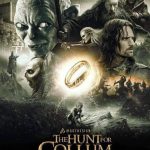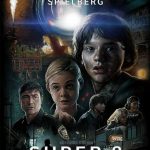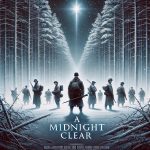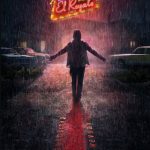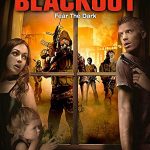Gretel & Hansel (2020)

Gretel & Hansel is a dark reimagining of the classic Brothers Grimm fairy tale, directed by Oz Perkins. Known for his previous work on psychological horror films such as The Blackcoat’s Daughter (2015), Perkins brings a slow-burn, atmospheric approach to this tale of two siblings lost in the woods. The film was met with mixed reviews, with praise for its haunting visuals and unique take on the story, but criticism for its pacing and lack of emotional depth.
Suggested videos for you:
Plot Overview
Set in a bleak, grim world, Gretel & Hansel reinterprets the classic fairy tale, focusing on the story’s darker, more unsettling aspects. The film follows a teenage Gretel (Sophia Lillis), who, along with her younger brother Hansel (Sam Leakey), is abandoned by their parents and forced to fend for themselves in a harsh, unforgiving forest. After a series of misfortunes, they find their way to a mysterious, isolated house owned by an enigmatic woman named Holda (Alice Krige), who seems to be hiding a dark secret.
Holda, a powerful witch, takes the children in, and it doesn’t take long before Gretel realizes that the woman may have nefarious plans for her and Hansel. The film focuses on Gretel’s coming-of-age journey, as she navigates the dangers of the witch’s influence, learning more about her own abilities and the growing power within her. The themes of temptation, trust, and self-discovery are central to the narrative, with the film offering a more psychological take on the fairy tale, rather than leaning heavily on magical action or fantasy.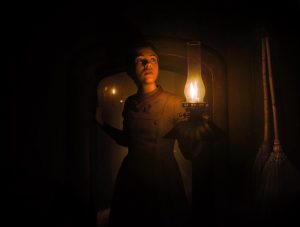
Themes and Atmosphere
Gretel & Hansel is rich in atmosphere, with its somber and oppressive tone pervading every frame. The forest setting is dark and foreboding, a place that feels more suffocating than enchanted, emphasizing the bleak and desperate circumstances the children find themselves in. This is not the whimsical, comforting world typically associated with fairy tales; instead, it’s a harsh, unwelcoming environment that underscores the sense of danger and isolation.
Thematically, the film explores issues of power, autonomy, and the transition from childhood to adulthood. Gretel’s journey is one of self-discovery, as she is confronted with the potential for power and the choice between remaining innocent or embracing darker forces. The witch, Holda, serves as a mentor figure, but her influence is dangerous, and Gretel must decide whether to accept or reject the temptation of power that she offers. This internal struggle is central to the film, and Gretel’s maturation into a more empowered, independent individual is mirrored by the increasing darkness around her.
The idea of growing up and discovering one’s own potential is heightened by the contrast between Gretel and Hansel. While Hansel is largely a passive character, Gretel’s evolution is more complex. Her connection to Holda, and the way she navigates her emerging power, makes her a more compelling focal point. The movie suggests that power is not necessarily a force for good or evil, but something that must be controlled and understood.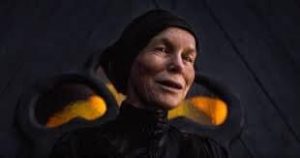
Visuals and Cinematography
One of the standout features of Gretel & Hansel is its stunning cinematography. The film’s aesthetic is deliberately bleak, with a muted color palette that reinforces the film’s oppressive atmosphere. The towering trees of the forest, the shadowy interiors of Holda’s house, and the vast, empty landscapes contribute to a sense of isolation and foreboding. The use of light and shadow is masterful, with the play of darkness symbolizing the looming threat of the witch and the psychological weight of Gretel’s journey.
The film also features some striking imagery, particularly in its depiction of the witchcraft and surreal, nightmarish sequences that occur throughout the story. These scenes, while sparse, are visually captivating and add to the film’s dreamlike, unsettling quality.
However, the film’s deliberate pacing and emphasis on mood over plot may alienate some viewers. The slow-burn tension, while effective in building atmosphere, can also feel drawn-out, leaving some of the more dramatic moments lacking impact. The pacing issues detract from the otherwise striking visuals, as the story sometimes struggles to maintain momentum.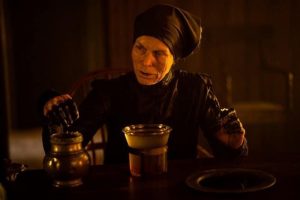
Performances
Sophia Lillis, known for her role in It (2017), brings a nuanced performance to Gretel. She captures the internal conflict of the character, portraying Gretel’s curiosity and fear with subtlety. Lillis effectively conveys Gretel’s gradual shift from a vulnerable, frightened girl to a more self-possessed young woman, as she grapples with the responsibilities and temptations that come with growing power.
Alice Krige’s portrayal of Holda is equally compelling. She imbues the character with a mysterious, almost maternal aura, making the witch figure both alluring and menacing. Krige is able to convey the ambiguity of Holda’s character, keeping the audience unsure whether she is a well-meaning protector or a manipulative figure seeking to corrupt Gretel.
While the performances are solid, Gretel & Hansel suffers from its character-driven narrative, which often leaves Hansel (played by Sam Leakey) as a more passive character. His role is largely one of emotional support for Gretel, and as a result, his character lacks much development. This imbalance in the character dynamics can make the film feel more one-sided.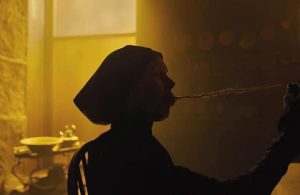
Conclusion
Gretel & Hansel is an atmospheric and thought-provoking reimagining of the classic fairy tale, offering a dark and psychological exploration of themes such as power, temptation, and growing up. While its slow-burn pacing and deliberate focus on atmosphere make it a visually striking and mood-heavy experience, it may not be for everyone. Those expecting a more conventional or action-packed horror film may find it too ponderous, but for those willing to embrace its eerie tone and psychological depth, the film offers a fresh and unsettling take on a familiar story. The film’s emphasis on atmosphere, along with strong performances from Lillis and Krige, make it a worthwhile watch for fans of dark, slow-burn horror.

